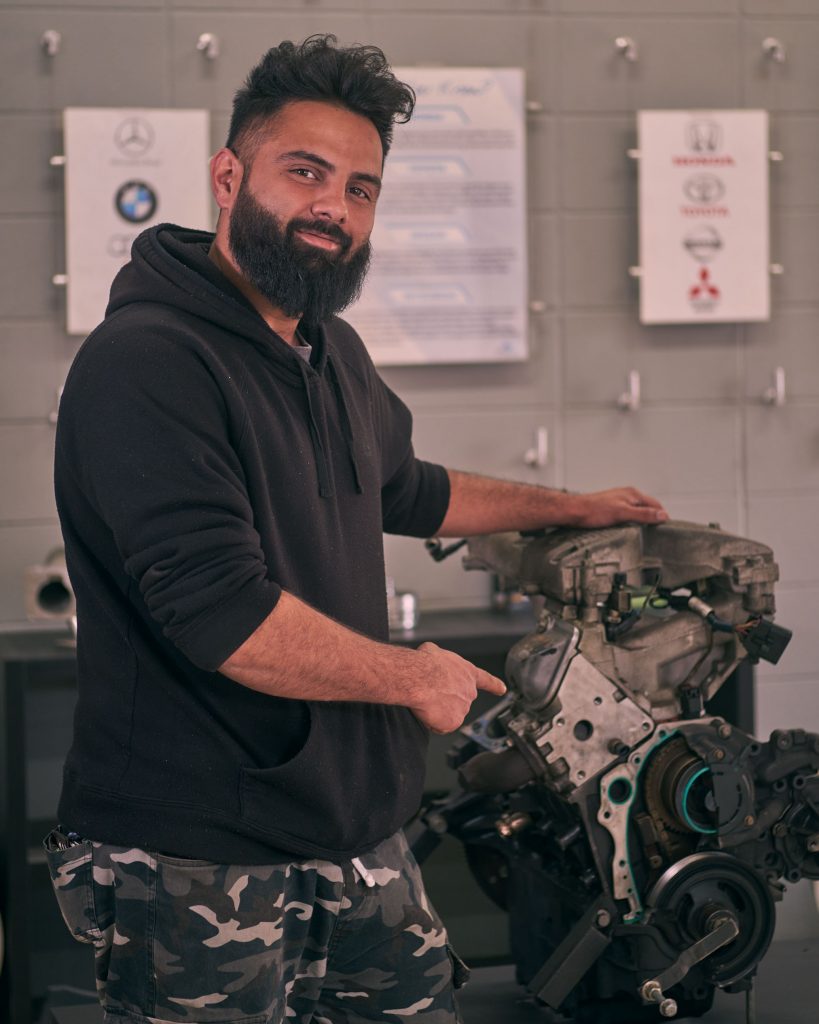Auto Shop Services
Located in Calgary; our state of the art auto repair shop is meant to handle jobs of all sizes. We have a very friendly, positive atmosphere where you can sit down on our comfy couches with a fresh coffee, watch some netflix and relax. Meanwhile our experienced mechanics will quickly work on your repair to get you back on the road. Can’t go without Mechanigo!
PRE-PURCHASE INSPECTION - $175
The focus of a pre-purchase inspection is to gather factual information on the vehicle's current condition. Typically, the evaluator is a mobile inspector who inspects the vehicle at its sale point. A short road test is usually included.
INSURANCE INSPECTION - $100
An insurance inspection is an inspection required for vehicles, that are 10 years and older to make sure they are road worthy.
DIAGNOSTICS - $125
The diagnostic test relies on a computer system that links to the vehicle's computer processor, sensors, and microchips, logging any problems or issues present. It can reveal existing flaws including problems with the exhaust, transmission, oil tank and other systems.
OIL CHANGE
An Oil Change is the act of removing the used oil in your engine and replacing it with new, clean oil. Over time, oil breaks down and gets dirty. Every 5,000-8,000km.
SUSPENSION
Suspension is the system of tires, tire air, springs, shock absorbers and linkages that connects a vehicle to its wheels and allows relative motion between the two. Suspension systems must support both road holding/handling and ride quality, which are at odds with each other.
BRAKES
A device for slowing or stopping a moving vehicle, typically by applying pressure to the wheels. Most vehicles should have their brakes inspected at least every six months.
Engine Services
A series of maintenance procedures carried out at a set time interval or after the vehicle has traveled a certain distance.

- Tune-up : A type of preventive maintenance performed on a vehicle to ensure it continues to perform well. The tune-up should also include cleaning or replacing the spark plugs and, on older cars, the distributor cap and rotor.
- Intake Manifold : A collection of tubes through which the fuel-air mixture flows from the carburetor or fuel injector to the intake valves of the cylinders of an internal-combustion engine.
- Fuel Injector : A device for actively injecting fuel into an internal-combustion engines by directly forcing the liquid fuel into the combustion chamber at an appropriate point in the piston cycle - an alternative to a carburetor, in which an air-fuel mixture is drawn in by the downward stroke of the piston.
- Sparkplugs : A part that fits into the cylinder head of an internal combustion engine and carries two electrodes separated by an air gap across which the current from the ignition system discharges to form the spark for combustion.
- Fuel Filter : A fuel filter is a filter in the fuel line that screens out dirt and rust particles from the fuel, normally made into cartridges containing a filter paper. They are found in most internal combustion engines.
- Cabin Air Filter : It's typically located behind the glove compartment or under the hood or dashboard on most modern vehicles. Its job is to filter all of the air that comes through the car's HVAC system to prevent pollutants, such as dust, pollen, smog and mold spores from entering.
- Timing Chain : A timing belt, timing chain, or cambelt is a part of an internal combustion engine that synchronizes the rotation of the crankshaft and the camshaft(s) so that the engine's valves open and close at the proper times during each cylinders intake and exhaust strokes.
- Timing Belt : A timing belt, timing chain, or cambelt is a part of an internal combustion engine that synchronizes the rotation of the crankshaft and the camshaft(s) so that the engine's valves open and close at the proper times during each cylinders intake and exhaust strokes.
- Head Gasket : The head gasket is compressed between the engine block and the cylinder head. The head gasket seals in the internal combustion process and also keeps coolant and oil from mixing together as the two fluids travel from the engine block to the cylinder head.
Electrical Services
Four Main Parts Make Up This System:
- Alternator : After starting your engine, your alternator takes over and generates power for the electrical system and recharges the battery. The electric system powers headlamps, light bulbs, and other electrical accessories.
- Batteries : Your vehicle's battery provides the electricity needed to start the engine. We recommend checking your battery with every oil change and replace it every three or four years.
- Starters : Your starter motor converts electrical energy into mechanical energy used to start your engine. Basically, once you turn your ignition, the starter cranks the engine to start your vehicle. As a general rule, test your starter every spring to make sure it draws the right amount of current.
- Wiring : The wires in your electrical system connect the battery to the starter motor, the alternator to the battery, and the alternator to the starter. These large wires transmit several hundred amperes during cranking.

Alignment
Alignment refers to an adjustment of a vehicle’s suspension – the system that connects a vehicle to its wheels. It is not an adjustment of the tires or wheels themselves. The key to proper alignment is adjusting the angles of the tires which affects how they make contact with the road.